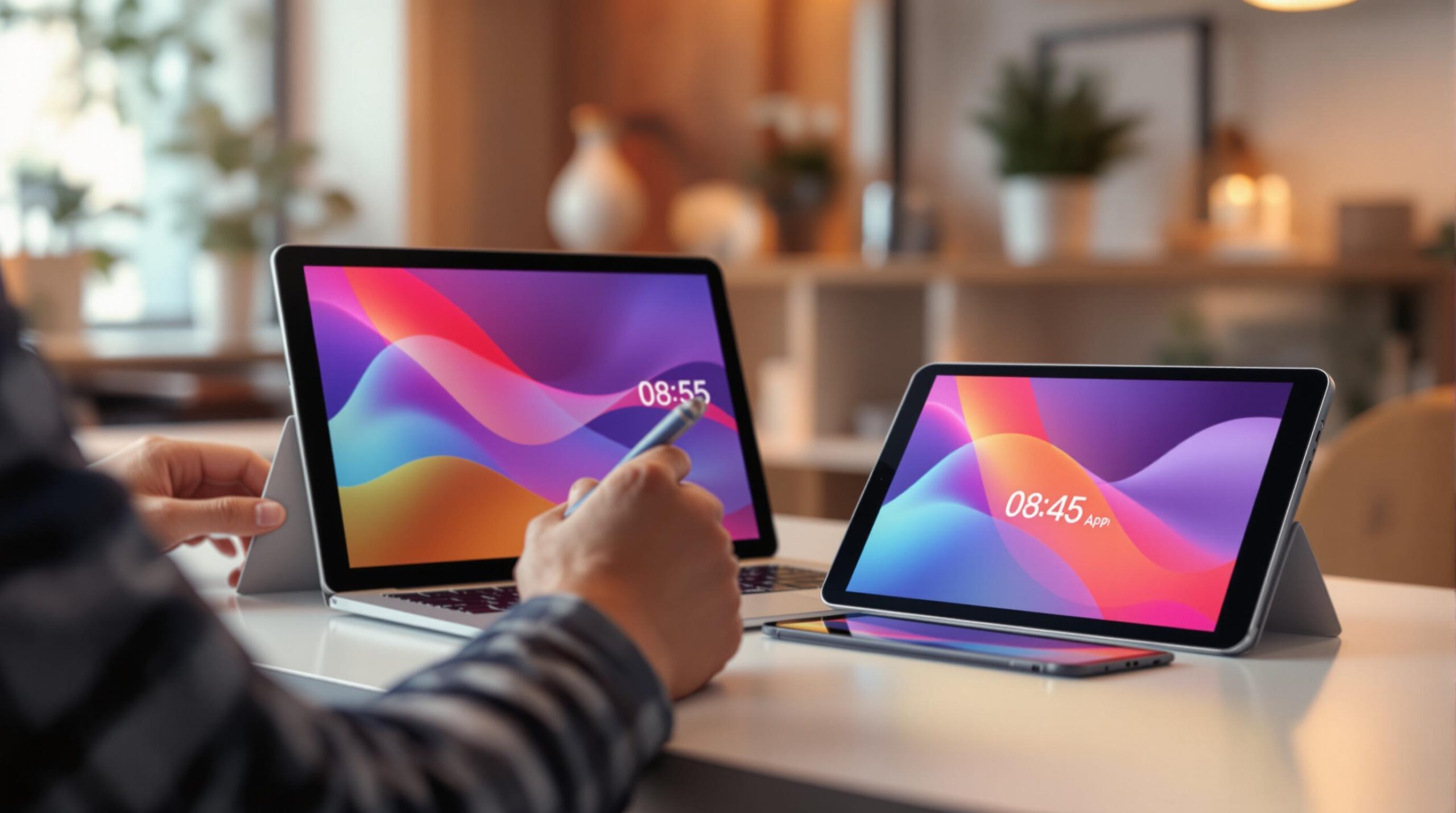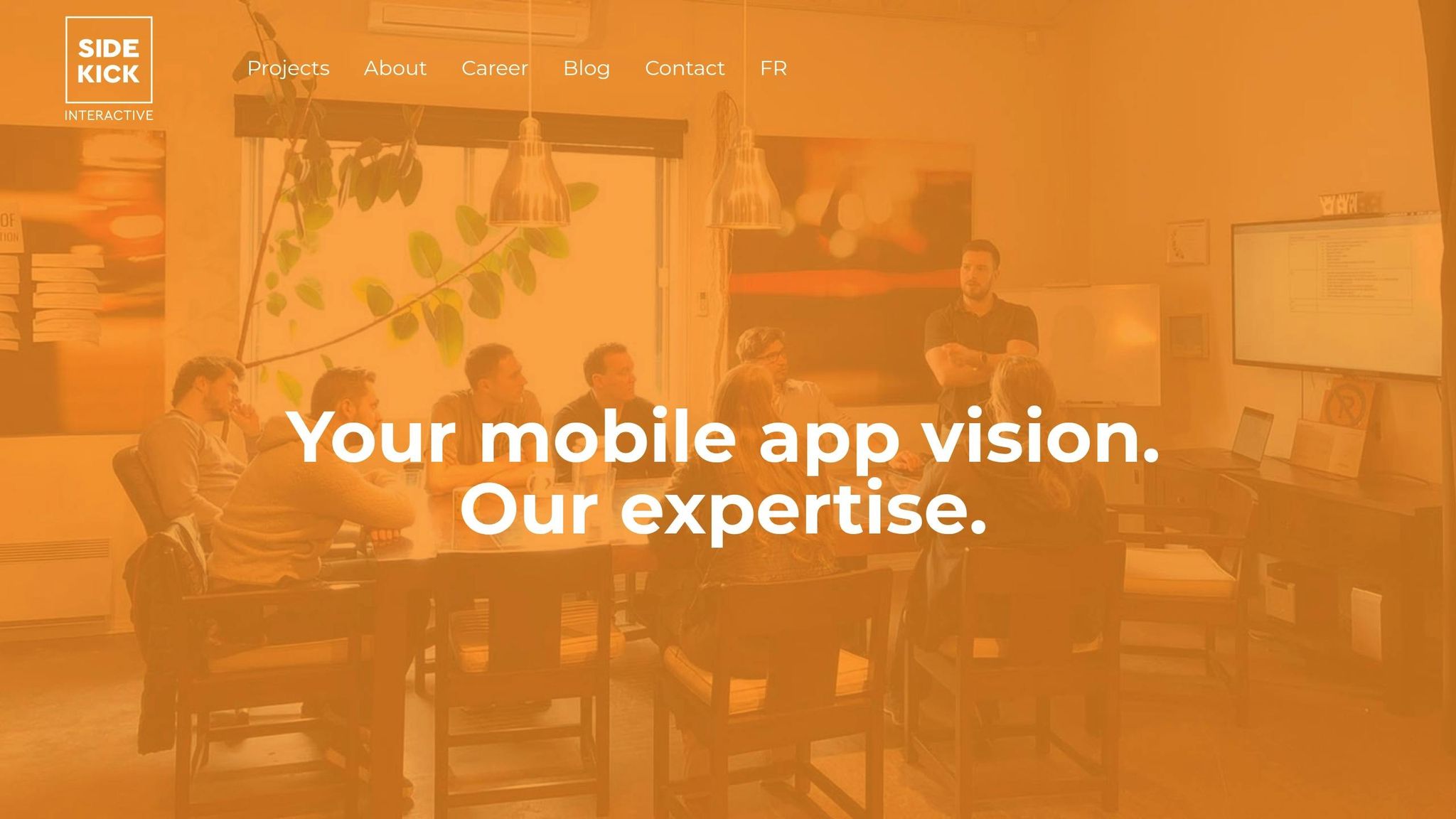
Smart device apps must work perfectly with hardware for a smooth user experience. Testing these apps isn’t just about checking the code – it’s about ensuring they integrate properly with hardware like cameras, GPS, sensors, and network interfaces. Simulators can’t fully replicate real-world conditions, making real-device testing essential.
Key Takeaways:
- Why It Matters: Skipping hardware testing can lead to malfunctions, crashes, or poor performance in real-world use.
- Common Issues: Problems like WiFi disruptions, battery drain, or Bluetooth pairing failures often arise without proper testing.
- How to Test: Use real devices to assess memory, battery, sensors, and network performance under normal and challenging conditions.
- Benefits: Better app stability, higher user satisfaction, and improved app store ratings.
Testing with specialists ensures your app performs reliably across devices and situations.
Mobile App Testing With Real Robots | Ad
Hardware-Software Testing Challenges
Testing apps for smart devices introduces unique hurdles that require focused expertise and rigorous evaluation.
Smart Device App Testing Problems
Testing on actual devices is crucial to uncover issues that simulators or emulators can’t replicate. Here are common challenges faced during smart device app testing:
| Challenge Area | Impact | Testing Requirement |
|---|---|---|
| Varied Device Specifications | Differences in hardware and capabilities | Testing across multiple devices and OS versions |
| Network Conditions | Performance fluctuates with bandwidth changes | Testing under different network speeds |
| Power Management | Energy-intensive features drain battery life | Assessing energy consumption efficiency |
| Hardware Integration | Components like GPS, sensors, and cameras must work seamlessly | Comprehensive integration testing |
Limits of Basic App Testing
Basic testing often falls short when faced with real-world scenarios. Variations in screen size, resolution, hardware specs, and network conditions can expose issues that standard methods overlook.
For instance, the growing IoT market, valued at $520 billion in 2021, highlights the need for more robust testing approaches. Basic methods typically fail to address:
- Environmental factors that influence app performance
- User interactions in real-world scenarios
- Hardware-specific functionality challenges
These gaps emphasize the importance of addressing compatibility issues between hardware and software.
Top Hardware Compatibility Issues
Effective testing ensures that software performs well across different hardware setups, mitigating common compatibility problems. A lack of universal standards often leads to these issues:
Connection Problems:
- WiFi disruptions
- Bluetooth pairing issues
- NFC communication failures
- Z-Wave protocol inconsistencies
Performance Issues:
- Inconsistent sensor accuracy
- Delayed data transfers
- Memory management errors
- Excessive battery usage
User acceptance testing (UAT) and user experience (UX) testing are essential to confirm both functionality and usability. Security testing also plays a key role, ensuring data encryption during communication between hardware components.
Thorough hardware testing not only improves app performance but often results in better app store ratings, reflecting user satisfaction.
Working with Hardware Testing Specialists
Hardware testing specialists play a key role in developing apps for smart devices by using thorough testing methods and real-world validation to ensure quality.
Testing Multiple Device Types
Testing across various hardware ensures compatibility and performance, identifying issues before users encounter them. Here’s a breakdown:
| Testing Area | Key Focus | Impact on App Quality |
|---|---|---|
| Device Variations | Screen sizes, resolutions, OS versions | Delivers a consistent user experience |
| Hardware Components | Sensors, cameras, GPS modules | Confirms proper component integration |
| Network Conditions | WiFi, cellular, offline modes | Ensures stable connectivity |
| Resource Usage | Battery consumption, memory use | Improves app efficiency |
Testing on real devices allows developers to catch hardware-specific quirks and performance issues. This approach mimics real-world conditions, helping ensure apps can handle everyday challenges.
Testing Under Normal Use Conditions
Testing in realistic scenarios reveals how apps perform during everyday usage. Factors like unstable networks, background processes, interruptions, and actual user environments are critical. For instance:
"Utilizing real devices for testing reveals true reflections of audio and video functionality across different platforms, offering insights into real-world user experiences and interaction."
Boosting App Performance and Reliability
Hardware testing specialists address key challenges, improving both app performance and the development process:
-
Enhanced Quality Assurance
Testing on real devices can significantly impact app ratings, often being the difference between 3-star and 5-star reviews. -
Improved Development Workflow
By outsourcing testing, developers can focus on building core features. Studies show that in-house manual testing often causes delays due to limited resources and incomplete test plans. -
Reliable Performance Validation
Specialists use a mix of automated and manual tests – such as load testing for stress handling, interruption testing for recovery, network assessments, and localization tests for global compatibility – ensuring apps perform well on a variety of devices.
Through thorough testing, apps achieve better stability, smoother user experiences, and dependable performance.
sbb-itb-7af2948
Hardware Testing Methods
Automated Testing Tools
Hardware testing often relies on specialized tools to speed up the process. For instance, DeviceVault‘s cloud platform allows testing across various hardware setups without needing to ship physical devices. It also integrates seamlessly with CI/CD environments to check for compatibility issues.
ATAM Connect is another tool that excels in stress testing and automation. It identifies hard-to-find bugs through repeated testing cycles. A notable example comes from the Consumer Electronics industry, where ATAM’s automated tests uncovered Bluetooth pairing problems that traditional testing methods missed.
"ATAM automation finds the bugs that manual testing misses" – Senior QA Engineer, Consumer Electronics
While automation is great for spotting hidden bugs, direct testing remains essential to evaluate how apps perform in everyday physical environments.
Direct Hardware Testing
Direct testing goes beyond automation to assess how hardware performs in real-world conditions. Key areas of focus include:
| Testing Aspect | Purpose | Impact |
|---|---|---|
| Physical Environment | Testing in noisy or low-light conditions | Ensures clear audio and video output |
| Multitasking | Verifying app stability during multitasking | Maintains functionality under load |
| Hardware Features | Checking compatibility with device sensors | Confirms proper integration |
| Network Conditions | Simulating various connectivity scenarios | Ensures reliable performance |
Testing under extreme or less-than-ideal conditions can uncover vulnerabilities that standard tests might overlook.
Testing Under Challenging Conditions
Stress testing evaluates how apps handle tough scenarios, such as:
- Network Bandwidth: Observing app behavior across different connection speeds
- Energy Usage: Monitoring battery consumption during use
- Display Consistency: Ensuring layouts remain intact across devices and screen sizes
These tests help ensure apps perform consistently, even under demanding circumstances.
Security and Privacy Testing
Ensuring secure hardware interactions is just as important as functional testing. Tools like the SmartThings Test Suite provide automated solutions for IoT compliance and certification. Suitest enhances security testing by enabling simultaneous security checks across multiple devices through OTT test automation.
Hardware Testing Success Stories
Medical Device App Testing
Theragen‘s ActaStim-S project highlights how detailed hardware testing can transform wearable devices used for back surgery. By thoroughly testing their companion mobile app, they achieved better movement encouragement, improved data accuracy, and ensured regulatory compliance.
"TXI’s team approached every problem as something that could be solved. We trust them with our business and to always do what’s in our best interest." – Chris McAuliffe, Founder and CEO, Theragen
The results speak for themselves: patients using the device experienced double the recovery success rate compared to placebo groups over nine months. Similarly, Siemens Healthineers tested their ultrasound machines in simulated environments with sonographers, leading to higher task completion rates, fewer errors, and smoother workflows.
These examples show how careful hardware testing can directly improve patient care and device performance. The same level of effort can lead to success in other connected device projects.
Connected Device Testing
Testing is just as critical for connected devices. For instance, AllHeartz‘s remote monitoring system achieved impressive results: a 50% drop in in-person visits, an 80% reduction in clerical work, improved data accuracy, and stronger HIPAA compliance. These outcomes align with the medical device testing results, emphasizing the importance of thorough hardware-software integration testing.
Key Testing Guidelines
Learn from these success stories by applying these essential testing practices:
-
Test on Real Devices
Using actual hardware uncovers issues that emulators or bench testing might miss. -
Ensure Regulatory Compliance
Between 2012 and 2015, the FDA reported 423 medical device recalls due to user interface software issues. To avoid similar pitfalls, document testing procedures, maintain version control, follow FDA and HIPAA guidelines, and prioritize data security. -
Adopt Continuous Monitoring
Testing throughout development helps catch problems early. Dedica Health’s platform is a great example – it monitors over 1,100 patients daily using rigorous testing protocols and automated routines for clinically certified sensors.
Conclusion: Building Better Hardware-Compatible Apps
Main Points for Teams
Testing hardware-compatible apps demands more than just basic software evaluations. Real-device testing uncovers issues that emulators simply can’t. Adding continuous monitoring helps catch problems early in the development cycle.
Here are some key strategies to consider:
-
Automated Testing Integration
- Run parallel tests on multiple devices
- Conduct automated stress tests
- Track data accuracy and system performance
-
Testing in Real-World Conditions
- Simulate different environmental factors
- Check hardware interfaces and sensor functionality
- Verify smooth cloud connectivity
-
Security and Compliance
- Adhere to industry regulations
- Implement strict data protection measures
"The automated stress tests uncovered issues with Bluetooth pairing and connection that were not discovered during our standard bench testing. ATAM is a great tool." – Senior QA Engineer, Consumer Electronics
By using these methods, teams can improve app performance and reliability.
Sidekick Interactive Services

Sidekick Interactive applies these proven practices to deliver tailored solutions for hardware-compatible apps. Their expertise spans areas like healthcare, Internet of Things (IoT), and connected devices, with a focus on managing sensitive data and meeting complex technical needs.
Their offerings include:
- Designing secure, compliant solutions for healthcare and research
- Crafting user-friendly interfaces for advanced technical systems
- Establishing thorough testing protocols for hardware-software integration
- Providing end-to-end support, from concept to deployment and beyond
This approach ensures apps work consistently across devices and conditions, making it especially valuable for organizations needing precise data handling and strong security.

